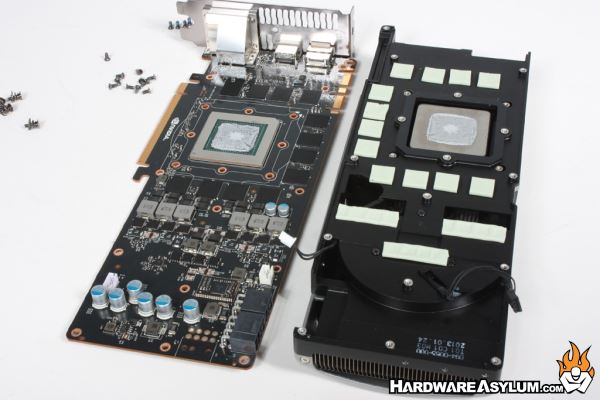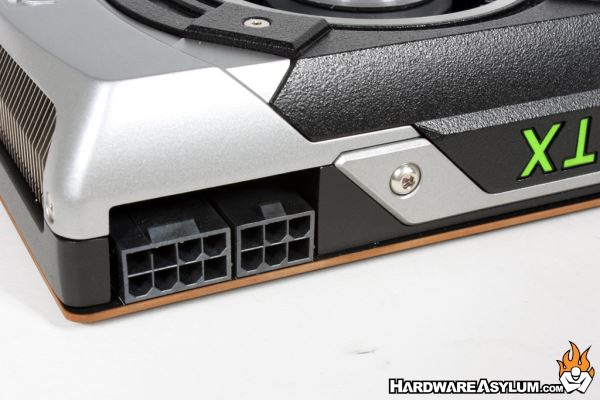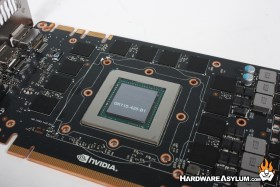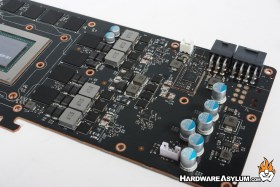NVIDIA GTX 780 Ti Video Card Review
Author: Dennis GarciaCard Uncovered
There are a handful of screws holding the custom heatsink to the GTX 780 Ti PCB and removing them all will release the cooler from the card. With the cooler removed you can clearly see the large GTX 780 Ti GPU surrounded by memory chips in the typical ring configuration.

Unlike some aftermarket cooling solutions this cooler makes contact with every heatsource on the PCB including every individual memory chip and VRM module. The heatsink is actually comprised of two parts with the dedicated heat spreader working independent of the primary GPU cooler. This helps to isolate temperature variations and ensure that GPU Boost 2.0 will work properly.
One of the limiting factors when overclocking is the size and strength of the reference VRM. Due to the lower power requirements NVIDIA determined that the same 6-phase design would be enough to drive the new GTX 780 Ti and still remain stable. By the looks of the design It would appear that NVidia is using the same VRM found on GTX Titan with a few additional components.
With any luck the voltage modifications will be the same across the cards allowing extreme overclockers the ability to void their warranties in style.

The NVIDIA power configuration for the GTX 780 Ti is an 8pin + 6pin power configuration and they recommend a 600w PSU for stability. As you may know there are three places, the 8-pin and 6-pin power connectors, and the PCI Express interface. The power sent to the GPU is normally balanced between these sources however when overclocking you have the potential to max one of them out and cause the system to become unstable. With the new power balancing feature the card will monitor the sources and if you max out one it will draw more power from the others to make up the difference.



